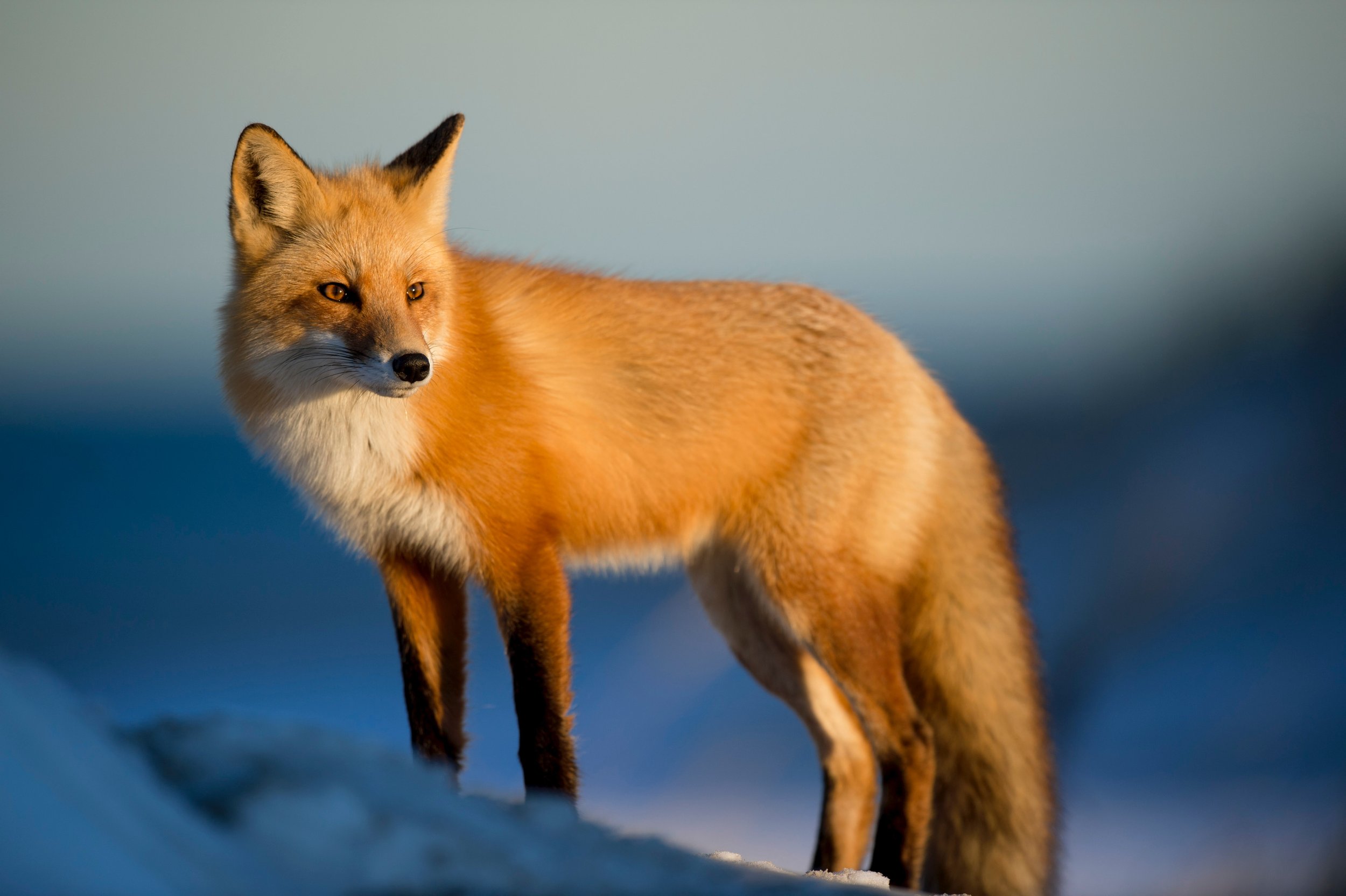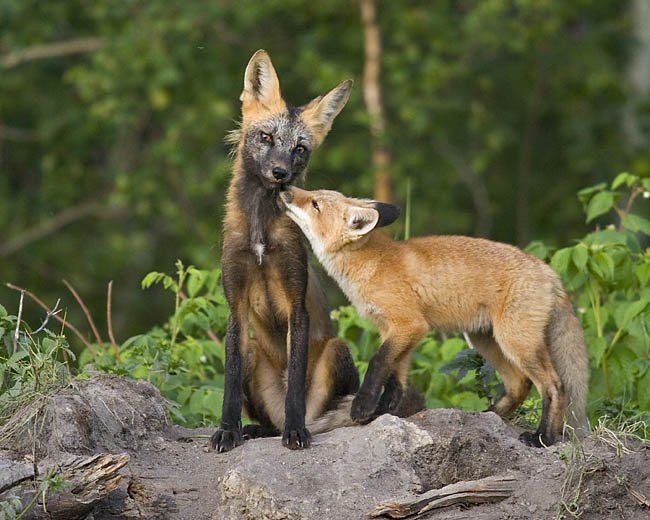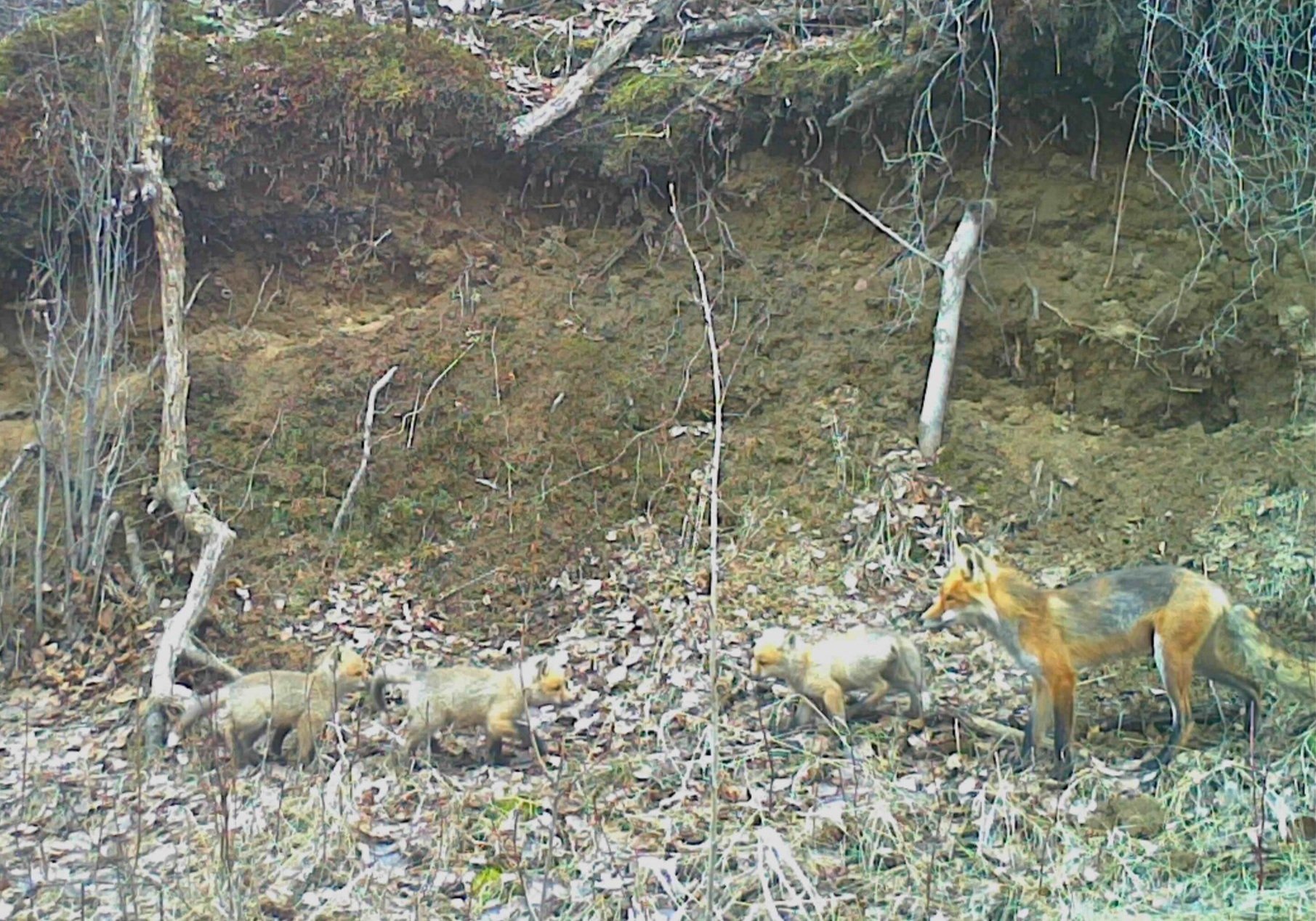Red Fox (Vulpes vulpes)
The shy and curious red fox often fills the role of the cunning trickster in human imagination. Once persecuted as poultry thieves, we now have a greater appreciation for the role these nocturnal hunters have in maintaining a healthy ecosystem.
Photo by Ray Hennessy
Why they Matter to Us
Red foxes regulate small mammal populations. Despite their one-time reputation as pests, red foxes can actually benefit farms by consuming crop-destroying rodents and insects.
Foxes feature prominently in folklore and popular culture.
How You Can Help
Support protected areas in the Edmonton region (such as EALT). You can donate or volunteer your time to help with conservation efforts.
How to Identify
Identify by Sight
Photo by Gerald Romanchuk
Red foxes have a pointed face and ears, long fur, and a large bushy tail. While red is the most common fur colour, red foxes may also be black or brown. They are usually lighter coloured on their undersides, and often have black socks and a black or white tail tip.
Identify by Sound
Red foxes are highly vocal and have 28 different kinds of vocalizations, including barks, yips, howls, and even screams. You can listen to some vocalizations in these videos.
Where to Find
Red foxes are widespread across Canada, occurring in all provinces and territories. They are very adaptable and live in a variety of habitats, including forests, prairies, farmlands, and urban environments. Red foxes are most active at night.
Social Life
Photo by Gerald Romanchuk
Foxes communicate with each other using visual cues, scents, and a variety of vocalizations. They do not form packs and usually only have one mate; however, there have been instances of three adult foxes inhabiting the same den and caring for one litter of pups.
Mating occurs between late December and mid-March, after which mating pairs will establish a den. Foxes often den in the abandoned burrows of other mammals, though caves, hollow logs, and dense brush may also be used. If left undisturbed, the same den may be used for many years. Dens may have more than one entrance, and a pair of foxes may have more than one den. This helps foxes and their young avoid danger.
Red fox pups seen on an EALT wildlife camera
Pups are born between March and May. Litters may have up to 10 pups, but 5 is more typical. They are blind at birth and cared for by their mother during the first few weeks of life. The male usually does not enter the den during this time, but will bring food back for his mate. Once the pups’ eyes open, the male with relieve the female so she can hunt. Fox pups wean at about one month and begin to play at the den entrance. Both parents will teach the young to hunt by bringing small prey for the pups to play with. At three months old, the young are usually able to hunt for themselves and leave the den site.
Food Chain
Most of the red fox’s diet is made up of small mammals like voles, mice, lemmings, squirrels, and rabbits. They may also feed on birds and bird eggs, insects, and fruit.
Red foxes are most vulnerable to predators, such as coyotes and eagles, when they are young pups. Pups are kept in a den and guarded by their parents to prevent predation. As adults, red foxes may be attacked by coyotes or wolves but are usually not taken as prey.
Photo by Gerald Romanchuk
Photo by Gerald Romanchuk
Fun Facts
Silver foxes are red foxes that have black fur with white-tipped guard hairs. Such foxes were highly prized for their furs, and were selectively bred in captivity when fox fur clothing was popular.
Individual red foxes have unique voices that can be distinguished from each other.
Red foxes have highly acute hearing and can hear even the slightest movement of their prey.
When hunting mice, red foxes will stand motionless then leap straight up and pin the mouse with their forelimbs. Watch a video of this behaviour!






